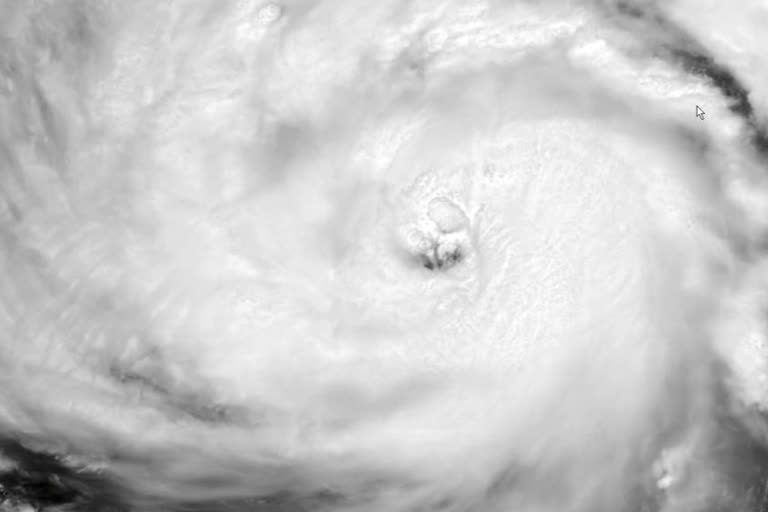New Orleans (Louisiana): Hurricane Ida rapidly grew in strength early Sunday, becoming a dangerous Category 4 hurricane just hours before hitting the Louisiana coast while emergency officials in the region grappled with opening shelters for displaced evacuees despite the risks of spreading the coronavirus.
As Ida moved through some of the warmest ocean water in the world in the northern Gulf of Mexico, its top winds grew by 45 mph (72 kph) to 150 mph (230 kph) in five hours.
The system was expected to make landfall Sunday afternoon, set to arrive on the exact date Hurricane Katrina ravaged Louisiana and Mississippi 16 years earlier.
Ida threatened a region already reeling from a resurgence of COVID-19 infections, due to low vaccination rates and the highly contagious delta variant.
New Orleans hospitals planned to ride out the storm with their beds nearly full, as similarly stressed hospitals elsewhere had little room for evacuated patients. And shelters for those fleeing their homes carried an added risk of becoming flashpoints for new infections.
On Grand Isle, where Ida appeared to be heading for landfall, the ocean steadily rose as increasingly bigger waves churned Sunday morning.
In New Orleans, where the worst weather is expected later, a light rain fell. Cars were parked on the median, which locals call neutral ground in New Orleans, because its a few feet higher and can protect against potential flooding.
Ida intensified so swiftly that New Orleans officials said there was no time to organize a mandatory evacuation of its 390,000 residents. Mayor LaToya Cantrell urged residents to leave voluntarily. Those who stayed were warned to prepare for long power outages amid sweltering heat.
Nick Mosca was walking his dog, like most of those who were out.
I'd like to be better prepared. There's a few things I'm thinking we could have done. But this storm came pretty quick, so you only have the time you have," Mosca said.
Gov. John Bel Edwards vowed Saturday that Louisiana's resilient and tough people would weather the storm. He also noted shelters would operate with reduced capacities to reflect the realities of COVID.
Edwards said Louisiana officials were already working to find hotel rooms for many evacuees so that fewer had to stay in mass shelters. He noted that during last year's hurricane season, Louisiana found rooms for 20,000 people.
Read: Iota threatens second tropical hit for Nicaragua, Honduras
So, we know how to do this, Edwards said. I hope and pray we don't have to do it anywhere near that extent.
In coastal Gulfport, Mississippi, a Red Cross shelter posted signs displaying directions for evacuees along with warnings about COVID-19. With skies still sunny, only a handful of people had shown up Saturday evening.
Shelter manager Barbara Casterlin said workers were required to wear face masks. Evacuees were encouraged to do the same. Anyone who refuses will be sent to an isolated area, she said, and so will people who are sick.
We're not checking vaccinations, Casterlin said, but we are doing temperature checks two or three times a day.
President Joe Biden approved emergency declarations for Louisiana and Mississippi ahead of Ida's arrival.
Comparisons to the August 29, 2005, landfall of Katrina weighed heavily on residents bracing for Ida.
A Category 3 storm, Katrina was blamed for 1,800 deaths as it demolished oceanfront homes in Mississippi and caused levee breaches and catastrophic flooding in New Orleans.
Officials stressed that the levee and drainage systems protecting the city had been much improved since Katrina. But they cautioned flooding was still possible with up to 24 inches (61 centimeters) of rain forecast in some areas.
Edwards said 5,000 National Guard troops were being staged in 14 Louisiana parishes for search and rescue efforts. And 10,000 linemen were on standby to respond to electrical outages.
Ida posed a threat far beyond New Orleans. A hurricane warning was issued for nearly 200 miles (320 kilometers) of Louisiana's coastline, from Intracoastal City south of Lafayette to the Mississippi state line. A tropical storm warning was extended to the Alabama-Florida line.
Meteorologist Jeff Masters, who flew hurricane missions for the government and founded Weather Underground, said Ida is forecast to move through the just absolute worst place for a hurricane.
The Interstate 10 corridor between New Orleans and Baton Rouge is a critical hub of the nation's petrochemical industry, lined with oil refineries, natural gas terminals and chemical manufacturing plants. Entergy, Louisiana's major electricity provider, operates two nuclear power plants along the Mississippi River.
A US Energy Department map of oil and gas infrastructure shows scores of low-lying sites in the storm's projected path that are listed as potentially vulnerable to flooding.
Read: Hurricane Iota powers up in new threat to Central America
(AP)



